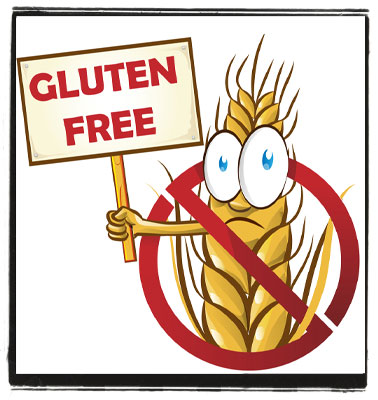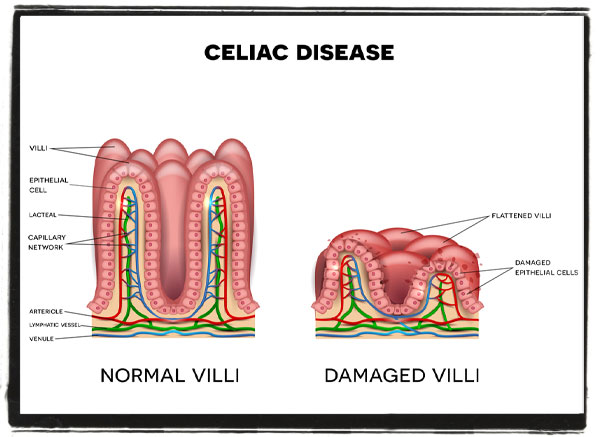
Celiac disease is an auto-immune condition that affects an estimated 1 in 133 Americans, or about 1% of the population. And it can occur at any time in a person's life.
When a person with celiac disease consumes gluten, their system sees it as a threat and mounts an attack. The villi of the intestines become damaged and cannot absorb nutrients, often resulting in malnourishment and other problems. The only real solution is to remove gluten from the diet altogether.
Many people might have gluten sensitivities yet don't test positive for Celiac disease. These individuals can also have various health issues ranging from bloating to headaches to fatigue.
To find out if you have a gluten sensitivity or possibly celiac disease, ask yourself the following questions:
1. Do you experience frequent bloating or gas?
2. Have you ever been diagnosed with IBS or acid reflux?
3. Do you have daily diarrhea or chronic constipation?
4. Do you experience frequent migraines or headaches?
5. Do you experience joint pain?
6. Do you have problems concentrating or staying focused?
7. Have you dealt with depression and anxiety?
8. Do you often feel fatigued?
9. Do you suffer from chronic eczema or acne?
If you answered yes to four or more of these questions, you could have celiac disease, or it could be that you have gluten sensitivity. Either way, you should consult with a doctor. They can test you immediately for celiac or have you eliminate gluten from your diet for 2 to 4 weeks to determine if your symptoms subside. If you answered yes to only one or two of these questions, eliminating gluten from your diet might still be worthwhile to see if your symptoms disappear.

Eliminating gluten from your diet can be easier than you think, and you might even lose a couple of pounds while testing your body's reaction to a gluten-free diet.
Gluten is typical in such foods as pizza, pasta, bread, wraps, rolls, and many processed foods. But many foods naturally do not contain gluten. For example, whole foods such as fruits, vegetables, legumes, and rice do not contain gluten. Quinoa is also gluten-free.
Whether you're a vegan or a vegetarian, you are most likely already used to giving extra thought to meal planning. Testing a gluten-free diet is similar; you will quickly learn which foods to avoid. You might find that cutting out some (though not all) gluten from your diet is sufficient to aid most symptoms.
Learn how to substitute gluten-free flour for regular wheat flour in your recipes and ours.

